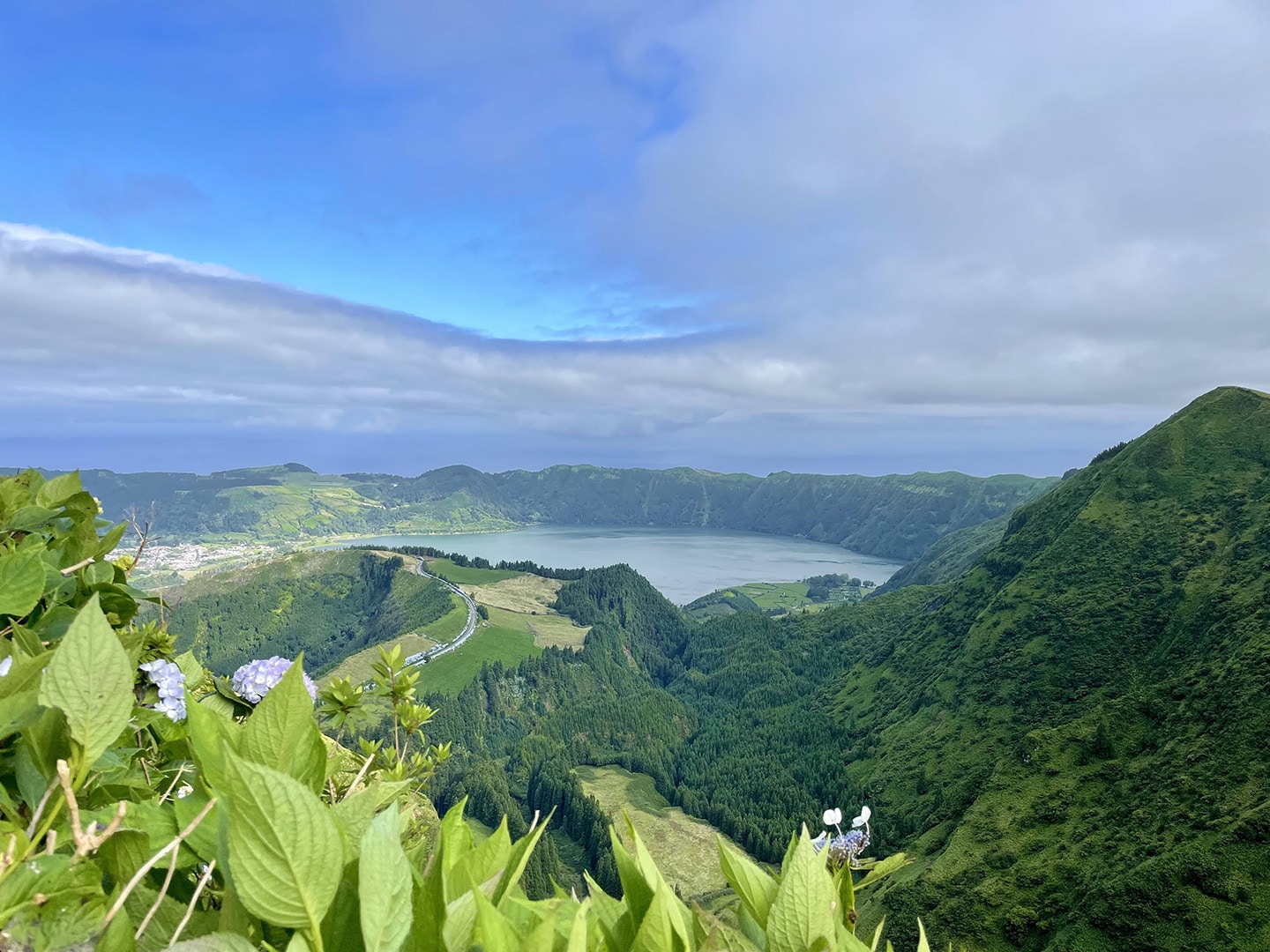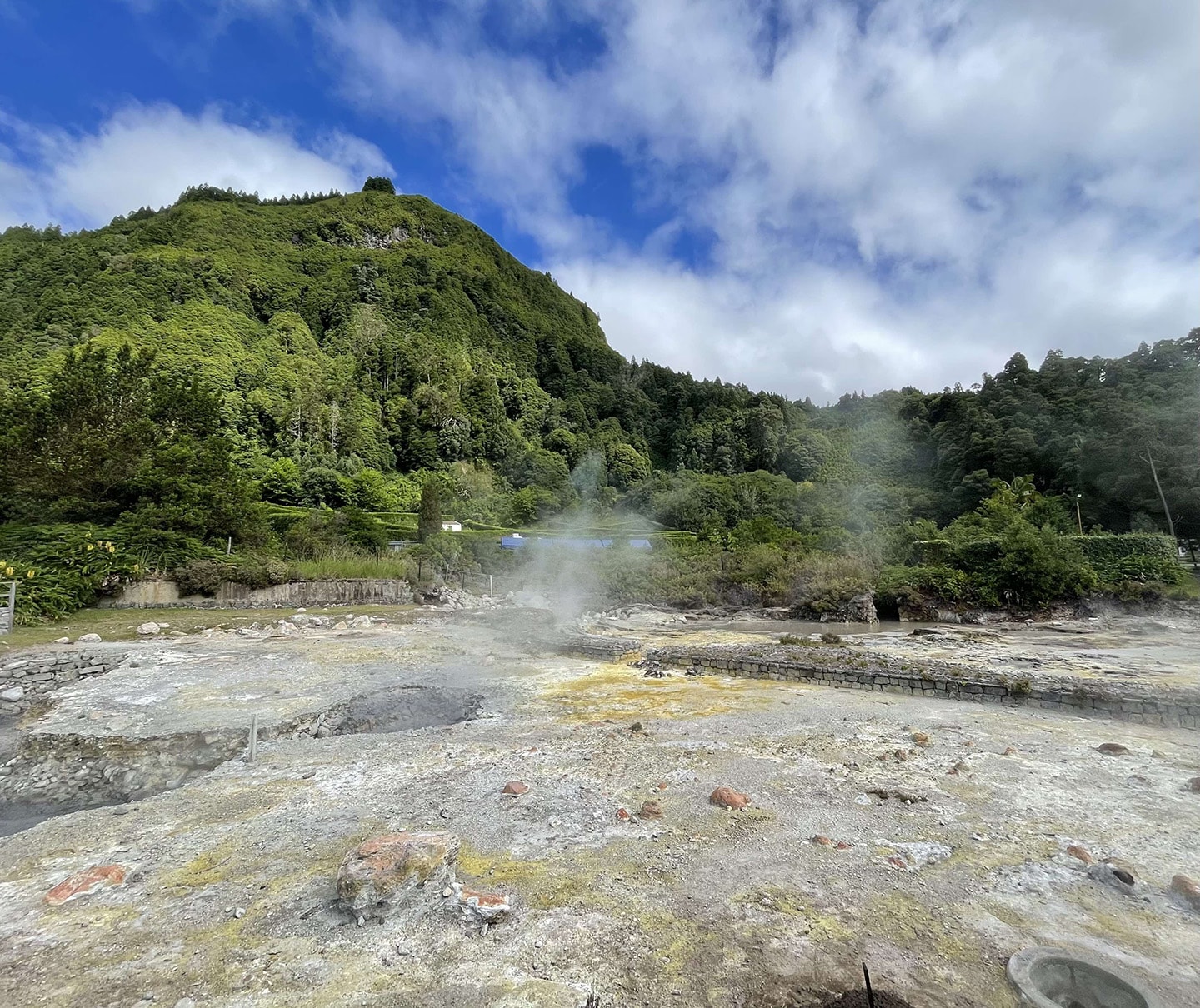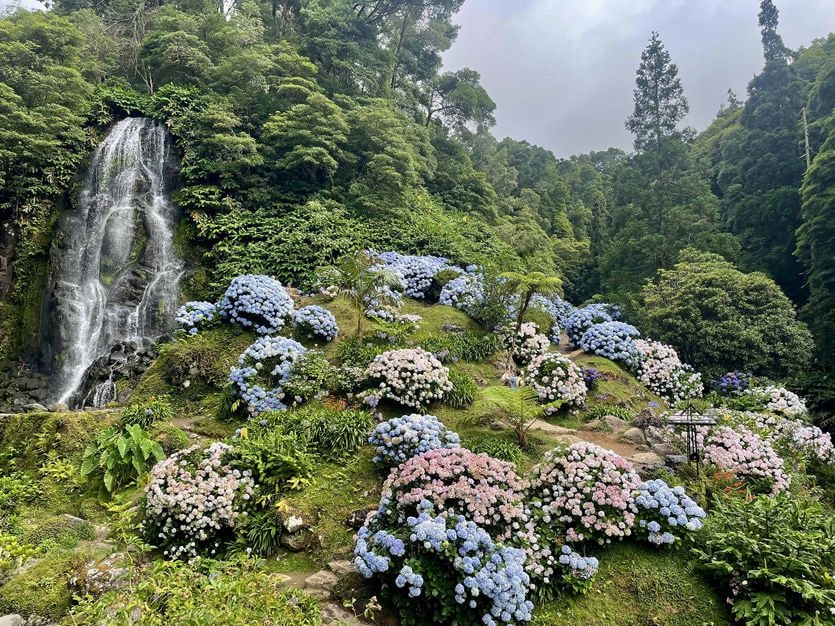Volcanoes and cliffs on São Miguel, the green island of the Azores.

Lost in the vastness of the Atlantic Ocean, the Azores seem like just a dot on the map. Once you reach them, you discover a place suspended between dream and reality, where nature reigns supreme. São Miguel, the largest and most populous of the nine islands that make up the Portuguese archipelago—known as the "Green Island"—surprises with its mosaic of bucolic and spectacular landscapes. Volcanic craters, lakes, vertiginous cliffs plunging into the ocean, valleys covered in lush vegetation where cows graze, roads lined with a blaze of blue and white hydrangeas, hot springs, tea plantations, pineapple orchards, hidden waterfalls, and lush parks. The subtropical climate maintains mild temperatures even in summer, making it a perfect destination for an active holiday in touch with nature, especially for hikers. To reach São Miguel, you can also take a direct flight (until the end of September) with Sata Azores, which takes you to an evergreen Atlantic Eden in four hours.

Sete Citades - São Miguel (Credit: Erika Scafuro)
Your journey to discover the green island of the Azores can begin at one of its most iconic sites: the volcanic crater of Sete Citades, listed among the Seven Natural Wonders of Portugal. Within it shimmer the evocative Lagoa Azul and Lagoa Verde, two lakes that, according to legend, were born from the tears of a green-eyed shepherd and a blue-eyed princess, unable to fulfill their love. These bodies of water can be admired from various viewpoints, or miradouros, immersed in lush vegetation. Among the most spectacular is the Grota do Inferno (Hell Cave), accessible via a trail starting from Lagoa do Canário; from an altitude of 800 meters, an enchanting view opens up, overlooking the Sete Citades crater and the Azul, Santiago, and Rasa lakes. Another evocative view is from the Vista do Rei viewpoint, named in honor of the visit of King Carlos and Queen Amélia in 1901. Continuing toward the center of the island, nature continues to amaze with Lagoa do Fogo, another volcanic lake nestled in a collapsed caldera and declared a nature reserve in 1974. The road that runs alongside it is accessible by car only in the morning (before 9:00 a.m.) and evening (after 7:00 p.m.), while during the day it is accessible by public shuttles. Along the way, several lookouts offer spectacular views of this pristine landscape, dominated by thick, lush vegetation.

Caldeiras das Furnas -São Miguel (Credit: Erika Scafuro)
In the eastern part of the island lies another wonder: Lagoa das Furnas, a lake bordered by a path that leads, on the northern edge, to the Caldeiras das Furnas geothermal field. Here, the ground releases steam and boiling water, and the earth's natural heat is even used to cook the typical cozido das Furnas, a slow-cooked meat and vegetable stew. The nearby village of Furnas is another must-see, as is a visit to Terra Nostra Park, one of the oldest gardens in the Azores, home to a variety of 1,800 botanical species.

Ribeira dos Caldeirões Park - São Miguel (Credit: Erika Scafuro)
Inside, a thermal pool, fed by a volcanic spring, offers a unique wellness experience thanks to the 42°C water, rich in iron and minerals beneficial to the skin. Continuing toward the northeast of São Miguel, you reach another postcard-perfect spot: Ribeira dos Caldeirões Park, with its waterfall nestled among hydrangeas. For another change of scenery, drive along the east coast, in the Nordeste region, a scenic road dotted with lookouts from which to admire the ocean and expanses of greenery.
Amidst lush valleys and volcanic landscapes, São Miguel also amazes with its gastronomic traditions and the architecture of its ocean-facing capital, Ponta Delgada. Styles from different eras coexist here, particularly Manueline, Baroque, and Gothic elements, such as those decorating the Church of São Sebastião and the majestic Portas da Cidade gates, the city's symbol.
ilsole24ore




